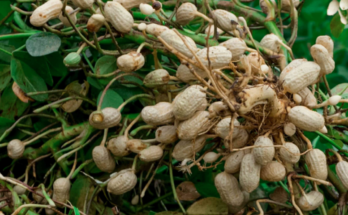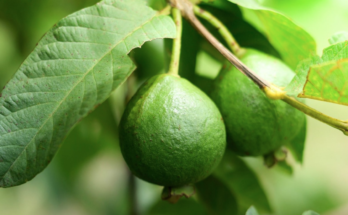As a passionate gardener, I often get asked, what is a tropical fruit garden? A tropical fruit garden is a delightful space to grow exotic fruits like mangoes, pineapples, and papayas.
I find these gardens incredibly rewarding. They bring a touch of the tropics to your backyard. The vibrant colors and unique flavors are simply unmatched.
In my experience, starting a tropical fruit garden requires some planning. It would help if you considered the climate and soil type.
Most tropical fruits thrive in warm, humid conditions. I recommend choosing a sunny spot with well-drained soil. It’s also important to water regularly.
Proper care and attention will yield delicious fruits. Watching your tropical garden flourish is a joy like no other. I’m excited to share my tips and experiences with you. Let’s dive into the world of tropical fruit gardening together!
What Is A Tropical Fruit Garden?
A tropical fruit garden is a special type of garden dedicated to growing exotic fruits such as mangoes, pineapples, and papayas.
These gardens are incredibly rewarding, offering unique flavors and vibrant colors that are simply unmatched.

I find immense joy in cultivating these fruits and watching my tropical garden flourish. Each fruit has its own story and growing requirements, making the gardening experience both challenging and exciting.
Benefits of a Tropical Fruit Garden
Growing a tropical fruit garden comes with numerous benefits. The unique flavors and vibrant colors of tropical fruits can transform your backyard into a mini tropical paradise.
These fruits are delicious and packed with health benefits, providing essential vitamins and nutrients. For example, mangoes are rich in vitamin C, while pineapples are known for their anti-inflammatory properties.

Additionally, the aesthetic appeal of a tropical garden adds an exotic touch to your outdoor space, making it a delightful place to relax and enjoy nature.
The personal satisfaction of growing your own fruits is another rewarding aspect of tropical fruit gardening. There’s nothing quite like picking a ripe fruit from your garden and enjoying its fresh, natural taste.
Essential Requirements
Starting a tropical fruit garden requires some specific conditions:
Climate: Tropical fruits thrive in warm, humid conditions. They need plenty of sunshine and consistent temperatures to grow well.
If you live in a region with colder winters, consider using greenhouses or growing your tropical fruits in pots that can be moved indoors.

Soil: Well-drained, fertile soil is crucial for the healthy growth of tropical fruits. It helps prevent waterlogging and provides essential nutrients.
Adding organic matter such as compost or well-rotted manure can improve soil fertility and structure.
Sunlight: Choosing a sunny spot is essential. Most tropical fruits require full sun for at least 6-8 hours a day. Ensure that your garden receives ample sunlight by avoiding shaded areas.
Watering: Regular watering is crucial. Tropical fruits need consistent moisture, but avoiding overwatering is important to prevent root rot. Using a drip irrigation system can help maintain the right moisture levels.
How to Start a Tropical Fruit Garden
Starting a tropical fruit garden involves several steps:
Planning: Select the right location with ample sunlight and prepare the soil by improving its fertility and drainage. Consider the layout of your garden and the space requirements of each plant.
Choosing Plants: Select suitable tropical fruit plants for your region. Consider factors like climate compatibility and space requirements. Some popular choices include bananas, guavas, and passion fruits.
Planting: Follow a step-by-step guide to planting tropical fruits. Ensure proper spacing and depth for each plant. Planting at the right time of year is also crucial for success.
Care and Maintenance: Regularly water, fertilize, and monitor your plants for pests and diseases. Proper care and attention will yield delicious fruits. Mulching can help retain soil moisture and suppress weeds.
Common Challenges and Solutions
Tropical fruit gardening comes with its own set of challenges:
Climate Issues: Unexpected weather changes can affect plant health. Use protective measures like mulching and shading to mitigate these effects. In colder climates, consider using frost cloths or heaters to protect your plants.

Soil Problems: Improving soil quality and drainage is essential. Add organic matter and ensure proper soil aeration. Conducting a soil test can help you understand the specific needs of your soil.
Pests and Diseases: Identify and manage common pests and diseases. Use organic pest control methods and monitor your plants regularly. Neem oil and insecticidal soaps are effective against many common pests.
Personal Tips and Tricks
From my personal experience, here are some useful tips for beginners:
Start with easy-to-grow tropical fruits like bananas and pineapples. These plants are more forgiving and can help you gain confidence.
Use organic fertilizers to enrich the soil. Organic options are safer for the environment and promote long-term soil health.
Regularly prune and trim your plants to encourage healthy growth. Pruning helps improve air circulation and reduces the risk of diseases.
Keep a gardening journal to track your progress and note any challenges. Documenting your gardening journey can help you learn and improve over time.
FAQ
1 What is a tropical fruit garden?
1 A garden dedicated to growing exotic fruits like mangoes, pineapples, and papayas.
2 What climate is needed for a tropical fruit garden?
2 Warm, humid conditions with plenty of sunshine are essential.
3 Can I grow tropical fruits in colder climates?
3 Yes, use greenhouses or pots to move plants indoors during winter.
4 What type of soil is best for tropical fruit gardens?
4 Well-drained, fertile soil enriched with organic matter is ideal.
5 How often should I water my tropical fruit garden?
5 Regularly, ensuring consistent moisture without overwatering.
Conclusion
A tropical fruit garden is a delightful addition to any backyard. By understanding what a tropical fruit garden is and following the right steps, you can enjoy the unique flavors and vibrant colors of tropical fruits.
I encourage you to start your tropical fruit garden and experience the joy of growing your exotic fruits. Whether you’re growing for personal enjoyment or to share with family and friends, the rewards are endless.
If you enjoyed this blog, don’t forget to subscribe for more gardening tips and tricks. Share your experiences and ask questions in the comments below. You can also share this blog on social media to inspire others.



